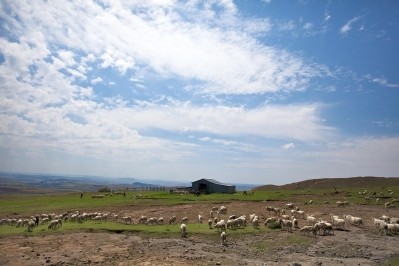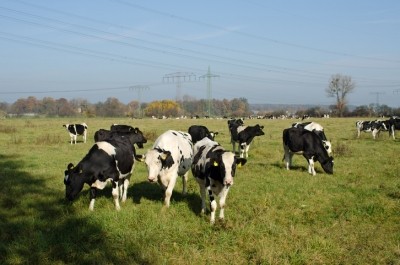FAO managing methane output in Ethiopian dairy sector

The regions of East Asia, South Asia, sub-Saharan Africa, and South America together contribute 70% of global enteric methane (CH4) emissions and are home to major proportion of global ruminant population, according to Food and Agricultural Organization (FAO) data.
In that context, the FAO said it has been engaging with the Global Research Alliance on Agricultural Greenhouse Gases (GRA) on a project to reduce enteric methane emissions in 13 countries in those regions: Uruguay and Argentina; Ethiopia, Uganda, Tanzania, Kenya, Senegal, Niger, Mali, Burkina Faso and Benin; and Bangladesh and Sri Lanka.
In a Feedipedia report on the project, Carolyn Opio, livestock policy officer, at the animal production and health division of the FAO, outlines outcomes of strategies for the dairy cattle sector in Ethiopia.
Dietary control of methane output
Dietary factors affect the community of microorganisms in the digestive tract and, thus, the quantity of methane (CH4) produced, noted the FAO.
It said an increasingly large body of literature suggests producers can manipulate CH4 production using diet (Johnson et al., 1995; Hook et al., 2010, Hristrov et al., 2013).
Ethiopian challenge
Ethiopia produces around 3.8m liters of milk from 12 million milking cows - an average of 1.7 liters per cow per day over an average lactation period of 180 days, noted Opio.
GHG emissions
Methane is the second major source of greenhouse gas emissions (GHG) after CO2 and it is 23 times more potent than CO2. Enteric methane is produced in livestock as a result of microbial fermentation of feed components by rumen microbes.
“In addition to the greenhouse effect of methane, it also represents a loss of 8 to 12% of the gross energy of feed consumed by the animals, thus being one of its most important inefficiencies in ruminant production system,” Raghavendra Bhatta, director of the National Institute of Animal Nutrition and Physiology (ICAR) in Bangalore in India, told us previously.
Milk yield performance of cows as reported by farmers varies widely across the different dairy production systems. “An inadequate supply of quality feed is the major factor limiting dairy production in Ethiopia,” she wrote.
Across all systems, fodder availability is inadequate and prices are too high for smallholder dairy farmers to access them. This is constraining their milk output and their ability to expand production, she noted.
“This problem is compounded by seasonal changes in pasture conditions, with poor productivity during dry seasons. High milk fluctuations arise because most farmers depend on rain for feed production and rarely make provisions for preserving fodder for the dry-season.
“In addition to seasonality of feed supply, the diet is largely made of low quality feed products such as crop residues and native pastures of poor nutritive value.”
Consequently, the digestibility of average feed ration in all four systems is very low and those constraints explain the low milk yields and short lactations, high mortality of young stock, longer parturition intervals, low animal weights and high enteric methane emissions per unit of metabolizable energy, said the FAO officer.
The research partners undertook an assessment of five nutritional strategies to evaluate their potential to reduce enteric CH4 emissions in Ethiopian dairy production.
The feed and nutrition-related interventions included supplementation with leguminous shrubs, use of urea molasses multi-nutrient blocks (UMMB), use of urea treated crop residues, and supplementation with high protein or energy concentrate.
Results
These tactics resulted in a reduction in emission intensities between 16-44%, reported Opio.
The treatment of crop residues with urea resulted in an emission intensity reduction of 44% relative to the baseline.
Supplementation of lactating cows with UMMB resulted in a reduction of emission intensity between 20-27%, she added.
“These reductions are a consequence of the improved feed digestibility, increased animal feed intake and associated increases in milk production,” said Opio.
All interventions returned a positive productivity outcome with increases in milk production ranging between 8-70%.
She said they found the highest productivity impacts were seen in the urea applications, as it provides both energy and nitrogen to the microorganisms in the rumen and thus improves the digestion and utilization of fibrous feed such as straw. It also provides readily available source of energy, protein and minerals for the dairy animal, said Opio.
“Decreasing the quantity of methane produced by animal will not only decrease the carbon footprint, it may also increase the efficiency of feed/nutrient utilization and possibly decrease production costs - generating win-win situations,” she concluded.
The FAO publication on the project to reduce emissions in dairy cattle production in Ethiopia is accessible here.








